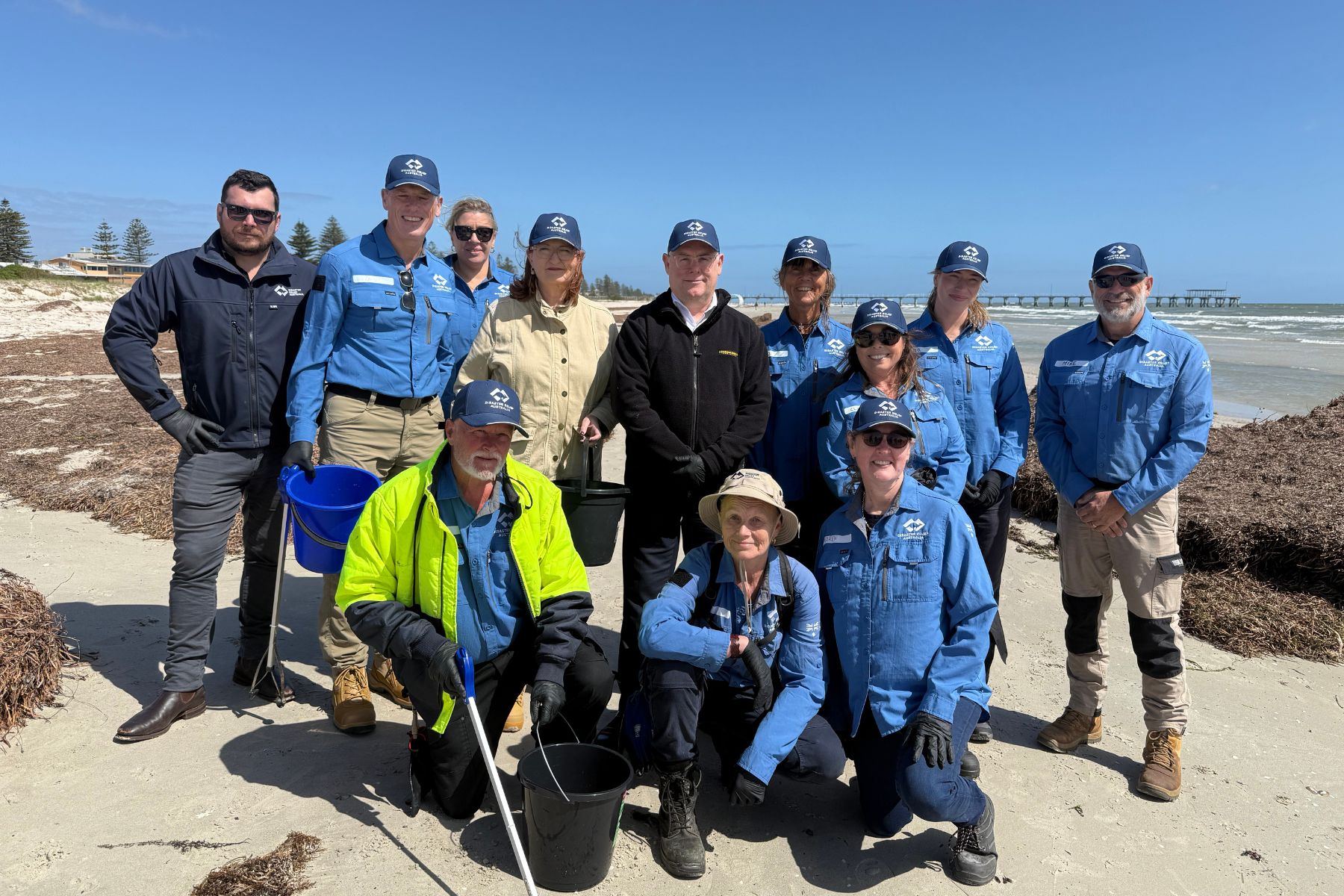Sea lion protection plan amid tonnes of dead sea life
More than 1600 kilograms of dead sea life was collected from SA beaches this week alone and a new $1.4 million protection plan for at-risk sea lions has been announced.

Beach clean-ups amassed some 1600 kilograms of sea life, including long snout boar fish, whiting and leatherjacket fish in the past seven days, according to an algal bloom briefing to the Adelaide Coastal Councils Network on Friday morning.
Now, the state and federal governments have announced a new $1.4 million program to protect sea lions, saying 80 per cent of the endangered population lives in SA waters.
A comprehensive plan announced on Friday by federal Environment Minister Murray Watt and his state counterpart Lucy Hood, would involve inoculating sea lion pups against hookworms to improve their survival, controlling feral cats to reduce disease spread and installing shelters at high-risk sites including the Spencer Gulf’s Seal Bay.
“The Australian sea lion is an iconic marine species, drawing visitors from around the world to our shores, and these measures are vital to help their recovery during this unprecedented algal bloom,” Hood said.
“We are determined to protect and regenerate Australian sea lion numbers and this program is supporting targeted conservation efforts.
“A more resilient sea lion population will play a critical role in the next breeding season after such an impactful event.”
You might like
In terms of the mass of dead sea life, it was collected by about 36 people each day – including members of the Goolwa Pipi Co who have been out of work during the algal bloom outbreak – as machine retrieval and volunteer groups also work to collect the dead creatures made up of numerous marine species across the state.
The latest figures come after two tonnes of dead sea life was collected by hand last week, according to a State Government Algal Bloom Reference Group briefing.
Adelaide Coastal Councils Network Chair Gretel Wilkes said the cleanup was a “big task”.
“I went out there and there were leatherjackets strewn across our beach and there would have been 1000s of them, easily,” she told InDaily.
The reference group heard schools have arranged backup aquatic programs as summer approaches, and Wilkes, who is also a schoolteacher, said it was a discussion point in the classroom.
“It’s quite concerning to see the kids and how worried they are about what’s going on and whether or not they’ll be able to swim, all the dead fish washing up on the beach, and trying to understand what summer is going to look like for them,” Wilkes, who is also an Onkaparinga councillor, said.
Stay informed, daily
About 550 different species were now reported to have died from the bloom according to the iNaturalist SA Marine Mortality Events page, a citizen scientist project created by marine biologist Janine Baker.
“These are scientists who aren’t working for DEW, they’re working off their own love for the ocean, because they are the ones that keep rocking up and keep trying really hard,” Wilkes said.

The state’s new algal bloom hotline, announced on Thursday, opened at 9am on Friday and took its first call at 9:01am with 15 calls in the first 20 minutes, most concerning swim safety, health and beach closure concerns.
A state government spokesperson said further beach clean-up work was being considered for SA’s regions in the lead up to summer.
“The State Government has put significant effort into establishing regular beach clean-up crews covering metropolitan beaches, the Fleurieu Peninsula and South Coast,” the spokesperson said.
After joining state ministers to announce the new phone hotline to field questions yesterday, Federal Environment Minister Murray Watt posed with Disaster Relief Australia (DRA) volunteers at Largs Bay.
The group is veteran-led and has made almost 270 trips to 24 SA beaches in the past three weeks in a cleanup effort dubbed “Operation Harris”.
Operation Harris is named in honour of Able Seaman James Coleman Harris from Hindmarsh, who died aged 20 on the HMAS Canberra in the 1942 Battle of Savo Island.
They have 109 volunteers in their fourth week of clean-up, supported by $38 million in federal government funding.
“Unlike previous traditional disaster recovery operations, Operation Harris demonstrates Disaster Relief Australia’s adaptability, flexibility, and agility to assist in a range of disaster and all-hazards scenarios,” Disaster Relief Australia CEO Dave Smith said.
“For many years now I’ve seen the tremendous work DRA does throughout disaster season. So to see their skills being put to good use in other times of need is incredible,” Minister Watt said.








